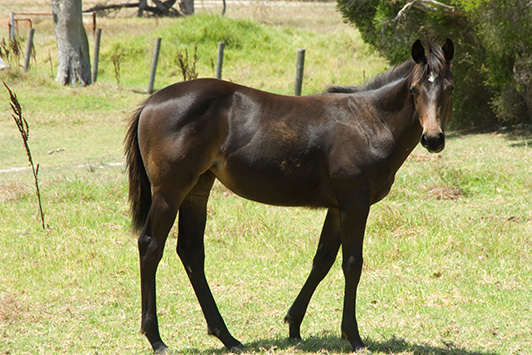Stock traceability is the first step in good biosecurity and is a key part of everyday sound farm management practices. Identification of horses and donkeys in WA is required under the Biosecurity and Agriculture Management (Identification and Movement of Stock and Apiaries) Regulations 2013.
All horse and donkey owners must be registered as owners of livestock and have a current property identification code (PIC) for the property/s where their animals are kept. This allows horses to be traced during disease outbreaks (such as equine influenza in Australia in 2007) and assists in recovering animals in cases of theft.
Exemptions
Unweaned horses and donkeys that are moved between properties with the same PIC while accompanied by their mother do not require identification. Their mother must be correctly identified.
Bringing horses and donkeys onto your property
Identification requirements
A property identification code (PIC) is used to identify the property on which the animals are normally kept, whether you own the land or not. When you register as an owner of stock, you enter the details of the property/ies on the registration form. This may be your property, an agistment centre or a friend's property. In these cases, the owner of that property must sign the registration form to confirm their consent for the animal(s) to be kept on their property.
Horses and donkeys must be identified with the registered brand as listed on your PIC card or with an approved identifier - see below for details.
Registered stock brand
Your registered brand consists of 2 letters and a number. One of the letters may be 'lazy', that is, lying on its side to the left. Registered identification for horses and donkeys is a freeze or a fire brand.
- A brand must measure at least 100 mm long and 30 mm high.
- Brand the left shoulder.
- Animals should only be branded by an experienced operator.
If you purchase a horse or donkey that is already branded, you do not have to re-brand it unless you wish to. You will need to have documents to show that you own the animal.
If you wish to brand newly acquired stock, the registered brand must be applied immediately below the existing brand on the left shoulder. When an age mark is present, the registered brand must be applied immediately below it. If there is insufficient room, the brand must be applied to the right shoulder.
Approved identification
Approved identification is an alternative identification system approved by the WA Registrar of Stock and Apiaries. This can include breed society identification systems and may involve a microchip, an alternative brand or a tattoo.
Owners are still required to be registered with the department.
Breed societies
Once approved by the Registrar of Stock, members of breed societies can use their society's approved identifier instead of their registered brand if they wish. They are required to keep the ownership records current for each animal.
For the approval process and groups with existing approved identification, see Approved identifiers for livestock.
Regional differences
South West Land Division
Horses and donkeys in the South West Land Division must be identified with a registered stock brand or an approved identifier before six months of age or before they are moved, whichever occurs first.
Outside the South West Land Division
Horses and donkeys outside the South West Land Division must be identified with a registered stock brand or an approved identifier before 18 months of age or before they are moved, whichever occurs first.
Requirements for moving horses or donkeys
Unlike other livestock species, a waybill is not required when moving horses or donkeys unless they are being moved to an abattoir for slaughter for human consumption. Waybills can be used if the owner wishes to keep a record of where their animals have been and when.
There are currently no legal requirements for organisers of shows and other meetings specifically for horses and donkeys. It's expected that event managers will keep comprehensive details of all attendees and their animals, and exercise good biosecurity practices to prevent disease spread and assist with traceability. The event location should have a PIC.
If you're an owner of livestock, you have a responsibility to ensure you meet the requirements of the Biosecurity and Agriculture Management (Identification and Movement of Stock and Apiaries) Regulations 2013.
The penalty for a breach of this legislation may be a fine up to $20,000.
Offences under the regulations include:
- Possessing a horse or donkey that is not legally identified.
- Using another person's registered brand.
- Applying your brand to a horse or donkey on a different property to those registered to your PIC.
- Trading/moving animals without correct identification.

